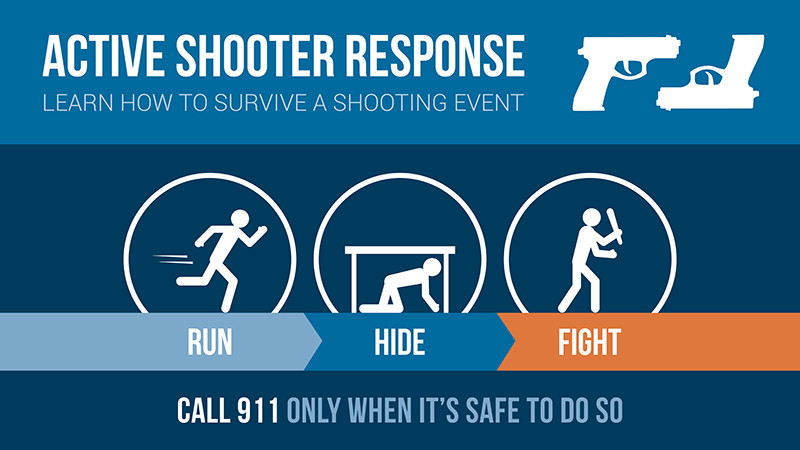
Active Shooter in the Workplace
Beau Bowman, Highflyer H.R., National Director of Sales
Retired USAF Security Specialist.
Louisiana State Constable, St Bernard Parish, Chalmette La.
Louisiana State Emergency Chaplain.
Recently I attended a First Person Active Shooter Training, for the Archdiocese where I am a member. I was then asked to develop a plan for the Church Parish & School, on how to prevent and defend against this scenario. This exercise naturally sparked some thought on the issue in our workplaces. When asking clients about the issue I was surprised by how many have not planned or trained beyond calling 911. This just will not suffice, so we took some time to put some resources together to assist you in your own business plan from sources like DHS.
In many cases, there is no pattern or method to the selection of victims by an active shooter. These situations are, by their very nature, unpredictable and evolve quickly. The U.S. Department of Homeland Security (DHS) offers free courses, materials, and workshops to better prepare businesses, schools, places of faith and any type of organization to deal with an active shooter situation and to raise awareness of behaviors that represent pre-incident indicators and characteristics of active shooters. Below are useful resources for planning and developing your training program:
Active Shooter: What You Can Do?
The 2013 Report on the National Summit on Multiple Casualty Shootings, identified five non-linear components of mass casualty violence prevention:
• Identifying a person posing a potential threat of violence;
• Notifying the appropriate authorities with this information;
• Evaluating the threat credibility;
• Intervening to prevent the threat; and
• Documenting the intervention and disseminating the information within applicable laws and regulations
Our focus should be on the five topics above to develop a plan for active shooters.
Threat Assessment Teams
Research shows that perpetrators of targeted acts of violence engage in both covert and overt behaviors prior to the attacks. Another resource most agencies can use to identify, evaluate, and The Threat Assessment Team’s objective is to use internal agency specialists (which could include personnel from the internal security office, Office of the Inspector General, Office of the Chief Human Capital Officer, Office of General Counsel, etc.) to prevent violence from occurring. Members are responsible for addressing threats, confronting violent behavior, and assisting in assessing potential for violence. TAT members consider, plan, prepare, share, and, in some cases, move on to action. The TAT serves as a central convening body that ensures that warning signs observed by multiple people are not considered isolated incidents and do not slip through the cracks, as they actually may represent escalating behavior that is a serious concern.
Know the Warning Indicators
Some people commit violence because of revenge, robbery or ideology – with or without a component of mental illness. While there is no way to predict an attack, you can be aware of behaviors in coworkers that might signal future violence:
· Excessive use of alcohol or drugs
· Unexplained absenteeism, change in behavior or decline in job performance
· Depression, withdrawal or suicidal comments
· Resistance to changes at work or persistent complaining about unfair treatment
· Violation of company policies.
· Emotional responses to criticism, mood swings
· Paranoia
Plan & Train
Homeland Security has developed an independent study course entitled Active Shooter: What You Can Do. This course was developed to provide the public with guidance on how to prepare for and respond to active shooter crisis situations.
Upon completion of Active Shooter: What You Can Do, employees and managers will be able to:
§ Describe the actions to take when confronted with an active shooter and to assist responding law enforcement officials
§ Recognize potential workplace violence indicators
§ Describe actions to take to prevent and prepare for potential active shooter incidents; and
§ Describe how to manage the consequences of an active shooter incident
The online training is available through the Federal Emergency Management Agency Emergency Management Institute. https://youtu.be/GEjc_xZGaSo
Available Materials for Download to assist you in planning.
§ Active Shooter Preparedness Program Fact Sheet
§ Active Shooter Poster (Spanish)
§ Active Shooter Pocket Card (Spanish)
Are you prepared? For more information on how to develop a plan to prevent and defend against an active shooter scenario, please give us a call at (844) 398-7800 or click here to fill out a form and we will contact you!

